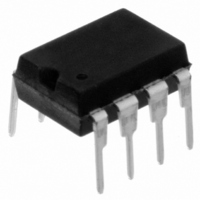11AA020-I/P Microchip Technology, 11AA020-I/P Datasheet - Page 16

11AA020-I/P
Manufacturer Part Number
11AA020-I/P
Description
IC EEPROM 2KBIT 100KHZ 8DIP
Manufacturer
Microchip Technology
Datasheets
1.11LC010T-ITT.pdf
(44 pages)
2.11LC010T-ITT.pdf
(22 pages)
3.11LC010T-ITT.pdf
(6 pages)
4.11LC160T-ITT.pdf
(38 pages)
Specifications of 11AA020-I/P
Memory Size
2K (256 x 8)
Package / Case
8-DIP (0.300", 7.62mm)
Operating Temperature
-40°C ~ 85°C
Format - Memory
EEPROMs - Serial
Memory Type
EEPROM
Speed
100kHz
Interface
UNI/O™ (Single Wire)
Voltage - Supply
1.8 V ~ 5.5 V
Organization
256 x 8
Interface Type
Serial
Maximum Clock Frequency
100 KHz
Supply Voltage (max)
5.5 V
Supply Voltage (min)
1.8 V
Maximum Operating Current
50 uA
Maximum Operating Temperature
+ 85 C
Mounting Style
Through Hole
Minimum Operating Temperature
- 40 C
Operating Supply Voltage
1.8 V
Lead Free Status / RoHS Status
Lead free / RoHS Compliant
Lead Free Status / RoHS Status
Lead free / RoHS Compliant, Lead free / RoHS Compliant
UNI/O
10.0
Slave devices must respond with a SAK if either a MAK
or NoMAK is received following the device address, as
long as the address is valid. In the case of a NoMAK,
the slave device will return to Standby mode immedi-
ately following the transmission of the SAK.
This feature allows the master to perform an address
polling sequence in order to determine what devices
are connected to the bus. Such a sequence is typically
used in conjunction with a list of expected device
addresses to allow for added flexibility in system
design.
FIGURE 10-1:
DS22076D-page 16
SCIO
SCIO
DEVICE ADDRESS POLLING
®
Standby Pulse
Standby Pulse
Bus
DEVICE ADDRESS POLLING EXAMPLE
0
0
Start Header
Start Header
1
1
0
0
1
1
0
0
1
1
In order to perform device address polling, the master
generates a standby pulse and start header and trans-
mits the desired device address followed by a NoMAK.
The master then checks to see whether or not a corre-
sponding slave transmits a SAK. If a SAK is received,
then a slave exists with the specified device address.
Note that a standby pulse must be generated before
every command, as a different device is being
addressed during each sequence.
Figure 10-1 shows an example of polling for two
devices, both with 8-bit device addresses. In this exam-
ple, the first device exists on the bus and the second
device does not exist. For 12-bit addressing, the
sequence is the same except that the SAK is checked
following the device low address.
0
0
1
1
1
1
Device Address 1
Device Address 2
0
0
1
1
0
0
© 2009 Microchip Technology Inc.
0
0
0
0
0
0
0
1













